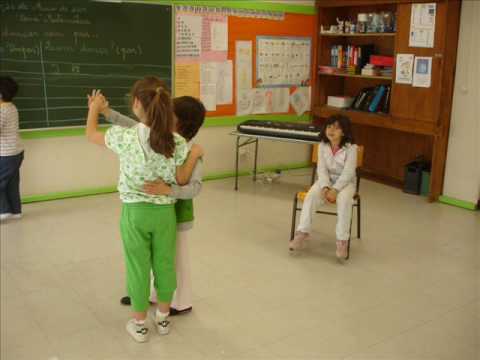The abilities to walk and run are very natural to human beings, and perhaps this reason is one of the reasons that contribute to athletics being one of the oldest sports in the world. Some evidence says it has been practiced for at least five thousand years.
Athletics is called a base sport, which is why it is considered the most important sport in the Olympics. It can be practiced by both men and women, mainly in stadiums, but also in other places, such as streets and roads.
The sports practices of athletics can be succinctly divided into three modes:racing, releases and heels. From them, a series of branches are considered official.
Index
- History of Athletics
- pitches and throws
- racing
- Athletic march
- Combined test (Decathlon and heptathlon)
- Relays
- jumps
History of Athletics
Athletics is considered one of the oldest sports practices in the world. Even before becoming known in Ancient Greece, it is estimated that approximately 5,000 years ago there were similar practices both by the Egyptians and by other Asian civilizations.
However, it was in 776 BC. C., in Ancient Greece, which he gained prominence. This year, the first Olympics in history took place in the city of Olympia. The first official contest was a run of approximately 192 meters, which was called the “stadium”.
The race was won by Coroebus, who became the first Olympic champion in history. Around 456 BC C, with the Roman invasion, the competition was losing strength. Until in 393 a. C., it ended up extinct.
The modern Games began to materialize from the end of the 19th century, when some schools and military academies started to include activities of this nature in their educational programs.
Thus, around 1840, in England, the first competitions that refer to modern athletics were held. In 1880, the practice was already common in the United States and in several other European nations.
A few years later, in 1896, the first edition of the Olympic Games of the Modern Era took place. From then onwards, the practice of the sport gained more and more strength, until the foundation of the International Athletics Federation (IAAF).
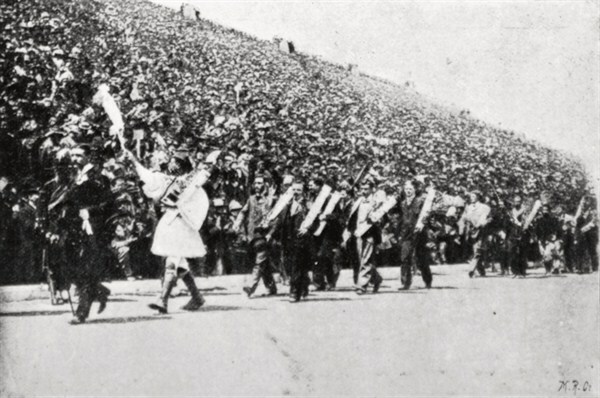
In Brazil, the sport began to become popular in the 20th century, and is linked to the Brazilian Athletics Confederation (CBAT).
Currently, athletics is made up of the following official events: throwing and throwing, running: shallow, hurdles, hurdles, jogging, combined event, relays and jumps.
In each of them, there are a series of modalities, which are distinguished mainly by the courses and equipment used in the competitions. See more details about each of them.
pitches and throws
In this modality, javelin, discus, weight and hammer throws are among the best known events. They can have participants of both sexes, varying for each one, the weight of the objects used.

- Shot put: The weight of the male ball is 7.26 kg, while the female is 4 kg. Throws are carried out on a field inside the stadium. The weight must be thrown as far as possible, and each athlete's best result will be computed.
- Discus throw: The disc is made of metal and in the male modality it weighs 2kg and varies in size between 219 and 221 mm. For women, the weight is 1 kg and the size varies between 180 and 182 mm. The launch area has a diameter of 2.50m.
- Javelin: For male competitors, the dart size is 2.60m and the weight is 800g. For women, the size of 2.20m and the weight of 600g is determined. The object is launched between two lines 90m apart.
- Hammer throw: The object to be thrown is called a hammer and is composed of an iron ball attached to a handle with metallic wire. This set has a weight of 7.26kg and a length of 120cm.
racing
Races, also called sprint races, are among those with the most variations. Among them, in relation to the course, obstacles, individual or in teams. They are usually played on tracks, but in some cases, such as the marathon, the competition is held on the street.
- Free Online Inclusive Education Course
- Free Online Toy Library and Learning Course
- Free Online Math Games Course in Early Childhood Education
- Free Online Pedagogical Cultural Workshops Course
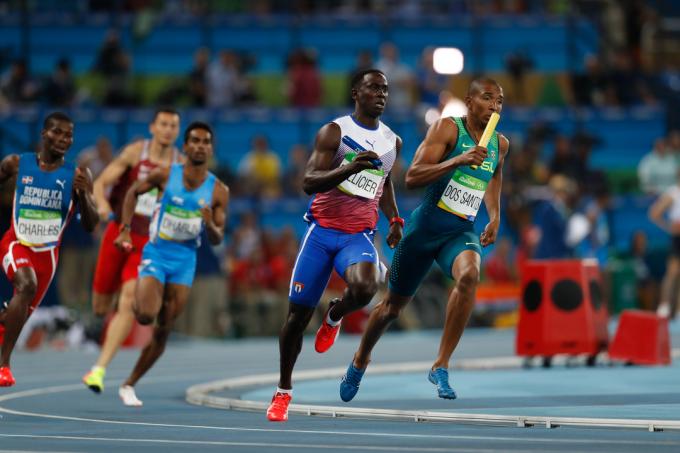
- Bottom race: Also called long-distance running, its course can vary between 5000 and 1000 meters.
- Middle end race: The course varies between 800 and 1500 meters, in the middle distance race competitors are not required to remain in their lanes, being allowed to pass through another competitor's space.
- Obstacle race: It can be 100, 110, 400 or 3000 meters. It is very similar to track racing, distinguished by the obstacles placed on the track.
- Track race: It is the best known modality. Its practice is done on oval tracks, which can be 100, 200 or 400 meters long. Between each of the candidates there are boundary lines.
- Marathon: The marathon course is 42.195 km long and the modality is generally practiced on streets or roads.
Athletic march
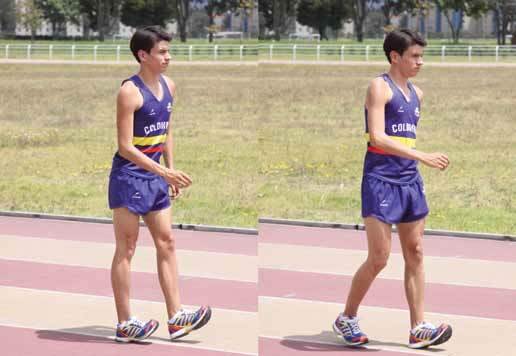
In this modality, participants travel routes of 20 or 50 km if men or only 20 km if women. In it, competitors can never completely take one of their feet off the ground.
For this to be verified, there are referees along the way to ensure full compliance with the rules. A competitor may have a maximum of three warnings during the race, being eliminated in the third.
Combined test (Decathlon and heptathlon)
Combined races exist in two categories, one exclusively for men and one for women. Both are played in two days, differing only by the amount of modalities in each one. The athlete who, at the end, has the greatest number of points wins.
It is a very important test during the Olympics, as its winner is considered the most complete athlete in the world, as different physical abilities are put to the test.
- Decathlon: It is the combined event dedicated exclusively to male competitors. It is made up of the following disciplines: 100m dash, long jump, shot put, in height, 400m dash, 110m hurdles, discus, pole vault, javelin and 1,500m shallow
- Heptathlon: The combined event for female competitors is called heptathlon, as the name implies, it is composed of seven modalities: 100m hurdles, high jump, shot put, 200m dash, long jump, javelin and 800m shallow.
Relays
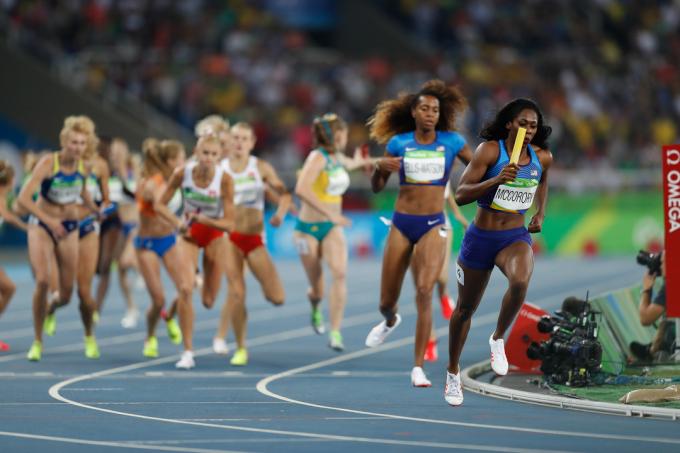
In this modality, the competitions are disputed by teams, each one with four athletes. Men's and women's teams can compete.
Each member walks a ¼ of a given course, which can be 4×100 m or 4×400 m with a stick, and hands it over to the next participant.
jumps
One of the best known athletics. They can also be classified into two modalities, vertical jump and horizontal jump.
Horizontal
- Triple jump: During qualifiers, each competitor may jump three times. The top twelve are classified for the final. The one who makes the best jump in the decision wins. In it, the athlete must take two jumps, before finally jumping into a sandbox.
- Long jump: The qualifiers are very similar to the triple jump. Each competitor performs three jumps and the best twelve go to the final, with whoever makes the best jump wins. Athletes run to a mark and when they reach it, they jump into the sandbox. The jump mark is used to measure distance.
Vertical
- High jump: In this modality, the objective is to overcome a slat without dropping it. For each round, an initial height will be determined, and for each of them the batten will be placed 3cm above the previous one. Athletes have three chances in each round, the best jump being considered as the final result.
- Pole vault: Very similar to the high jump, this one is distinguished by the aid of a flexible pole, which measures between 4 and 5 meters. From the initial round the battens are placed 5cm higher on each of the others. The athlete will also have three attempts, being considered the best one as the final result.
Get to know details of other sports:
- Handball
- Basketball
- Fencing
- Baseball
- futsal
- Badminton
- Volleyball
The password has been sent to your email.

